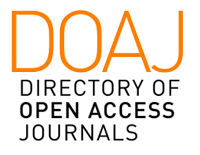[GW28-e0828]
Comparative Study of Thrombolysis with PCI and Primary PCI on Coronary Microcirculation in patients with Anterior STEMI
Yuyang Xiao Xiangming Li Xianghua Fu
The Second Hospital of Hebei Medical University
Objectives: Comparing thrombolysis combined with PCI and primary PCI on coronary microcirculation in patients with anterior ST-segment elevation myocardial infarction.
Methods: From March 2015 to December 2016, all anterior STEMI patients within 24 hours from symptom onset in Cardiology Departmentof our hospitalwere enrolled. All eligible STEMI patients were divided into two groups: post-thrombolysis PCI group (T-PCI group, patients have received thrombolytic agents in non-PCI capable hospital or ER in our hospital before. If IRA was thought to reopen, patients were transferred to receiving early PCI in 3-24 hours. If they failed to recover coronary flow, they must accept emergent PCI as soon as possible) and primary PCI group (P-PCI group, patients receiving primary CAG/PCI). All details were recorded, including baseline information, operative data, such as reperfusion time, TIMI flow of IRA before and after PCI, thrombus score and coronary microcirculation related indicators: CTFC and TMPG were analyzed. Both groups measured LVEF and WMS by taking echocardiography 7 days and 3 months after PCI. All patients were followed up for 3 months to assess bleeding implications and MACEs. SPSS 22.0 for was used for statistical analysis. Values of p < 0.05 were considered statistically significant.
Results: Totally 100 patients were enrolled in this trial with 32 in T-PCI group and 68 in P-PCI group.
1. Baseline characteristics such as gender distribution, age, BMI, the risk factors of coronary heart disease (hypertension, diabetes, dyslipidemia, smoking), laboratory index (serum BNP, SCr, Hb and LDL-C), Killip grade, GRACE score, CRUSADE score were similar between the two groups. In terms of myocardial necrosis marker enzymes the peal value of CK-MB and cTnI in T-PCI group higher than P-PCI group, while there was no statistical significance between two groups.
2. The mean time from symptom onset to thrombolysis was 3.4±2.05 h in T-PCI group. Compared with P-PCI group, the mean time from onset to PCI was longer in T-PCI group. There were no differences in the number of implanted stents, appliance of tirofiban as well as thrombus aspiration rate. Before PCI, rate of TIMI 0and 3 flow has significant difference (p<0.001). Thrombus 0 and 5 scores in T-PCI group respectively were lower than that in P-PCI group (p<0.05). The level of LAD-CTFC in T-PCI group was higher than that in P-PCI group(p=0.043). TMPG 3 grade after PCI in T-PCI group higher, and there was a significant difference (P=0.045).
3. There was no significant difference in LVEF and WMS at 7 days after PCI between the two groups (LVEF: p=0.625; WMS: P=0.631). At 3 months after PCI, LVEF between the two groups has no difference either, whereas LVEF was improved significantly in each group(p<0.05).
4. There was no difference in the incidence of bleeding complications and MACEs. For major bleeding events, there was 2 case in T-PCI group and 2 in P-PCI group. For minor bleeding, there were 8 in T-PCI group and 7 in P-PCI. One patient in P-PCI group received transfusion in hospital.
Follow-up in 3 months, the incidences ofMACEs in two groups showed no difference (All P>0.05).
Conclusions: 1. Coronary microcirculation in patients with anterior STEMI was better in patients undergoing thrombolysis combined with PCI.
2. It is safe and efficacious for anterior STEMI patients receiving thrombolysis with PCI, which shares the same advantage of improving left ventricular function, without increasing bleeding complications and MACEs incidence.














